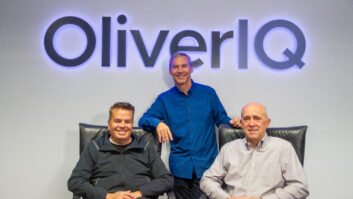Here’s what research results show about the prospects for satellite and terrestrial digital radio sales:
OEM Vs. Aftermarket Car Sales: XM Satellite Radio and Sirius Satellite Radio expect the majority of car SDARS sales to come from the aftermarket in the first few years of service, given that OEM receivers won’t be available as standard or optional equipment in every car at the outset.
Aftermarket prices, XM said, will initially range from $199 to $450, depending on the configuration. At the OEM level, the price will range from $150 to $250 over the price of a car’s standard radio, XM said.
“There are 15 million new cars produced a year compared to 200 million on the road,” added Sirius marketing VP Terrence Sweeney. “You won’t get 100% penetration in new cars at the start, so the mix will lean to the aftermarket early on.”
For similar reasons, USADR marketing director David Salemi expects most terrestrial IBOC car radio sales to initially come from the aftermarket rather than from the automakers. Lucent Digital Radio president Suren Pai, on the other hand, projects roughly equivalent IBOC sales between automakers and the aftermarket in the first five years of IBOC service.
Based on its own research, Lucent projects aftermarket IBOC sales of 2 million to 3 million per year during the first five years of service, or almost half of what it said has been the annual average of aftermarket radio sales during the past few years.
Lucent also conservatively projects sales of 2 million to 3 million OEM IBOC radios by the automakers, but that number could easily be higher if the automakers are more aggressive than Lucent expects, Pai said.
Lucent’s projections assume a $100 price premium targeted by the company.
Home Vs. Car Sales: IBOC receiver sales in the first five years of service will be split 60:40, favoring car over home radios (OEM and aftermarket combined), according to USADR’s business plan, which USADR’s Salemi said is based on a conservative analysis of consumer surveys and analysts reports. USADR’s estimates of home sales include A/V receivers, rack systems and shelf systems but exclude clock radios.
In part, the sales ratio stems from the number of vehicles on the road (207 million, according to the Department of Transportation) compared to a smaller number of households (98 million).
For its part, Lucent projects that home receiver sales will hit 2 million to 3 million per year during the first five years compared to 4 million to 6 million car radio sales (OEM and aftermarket).
“At five years,” Lucent’s Pai noted, “most research reports project 10% to 15% of the embedded base of [180 million to 200 million] car radios to be digital [when OEM and aftermarket sales are combined]. About 20% to 25% of the embedded base of home receivers will be digital.”
In its own consumer survey, Lucent found overall interest in home receivers to be higher than interest in car receivers, but citing consumer purchasing patterns, the company nonetheless expects car receiver sales to outpace home receiver sales in the first five years.
Consumer purchasing patterns depend not only on interest levels, but also on other factors such as the frequency with which people replace their cars and home audio systems, Pai said.
In its survey of potential IBOC purchasers, USADR also found that 41% of early adopters expressed the most interest in buying home receivers, while 30% were most interested in aftermarket car receivers.
“In three to five years,” USADR’s Salemi added, “portables will kick in as DSPs become more energy efficient and fall in price.”
On the satellite side, Sirius and XM agree that most SDARS radios will be car radios at first, largely because that’s where they’re targeting their marketing efforts. “Our retailers don’t see a big market for home receivers,” Sirius’s Sweeney said. “At home, you compete with TV, the Internet and CDs.”
Nonetheless, Sweeney said, Sirius “will be in people’s homes right from the start,” perhaps not with a dedicated digital receiver but perhaps by streaming its content to broadband cable modems or by offering its service through DBS systems. “We have been talking to EchoStar,” he said. DBS provider DirecTv is a partial owner of Sirius rival XM.
SDARS’ greater appeal on the car side is coast-to-coast coverage that delivers uninterrupted programs when drivers travel from market to market, even during their daily commutes, or into markets with little or no terrestrial coverage, proponents said.













